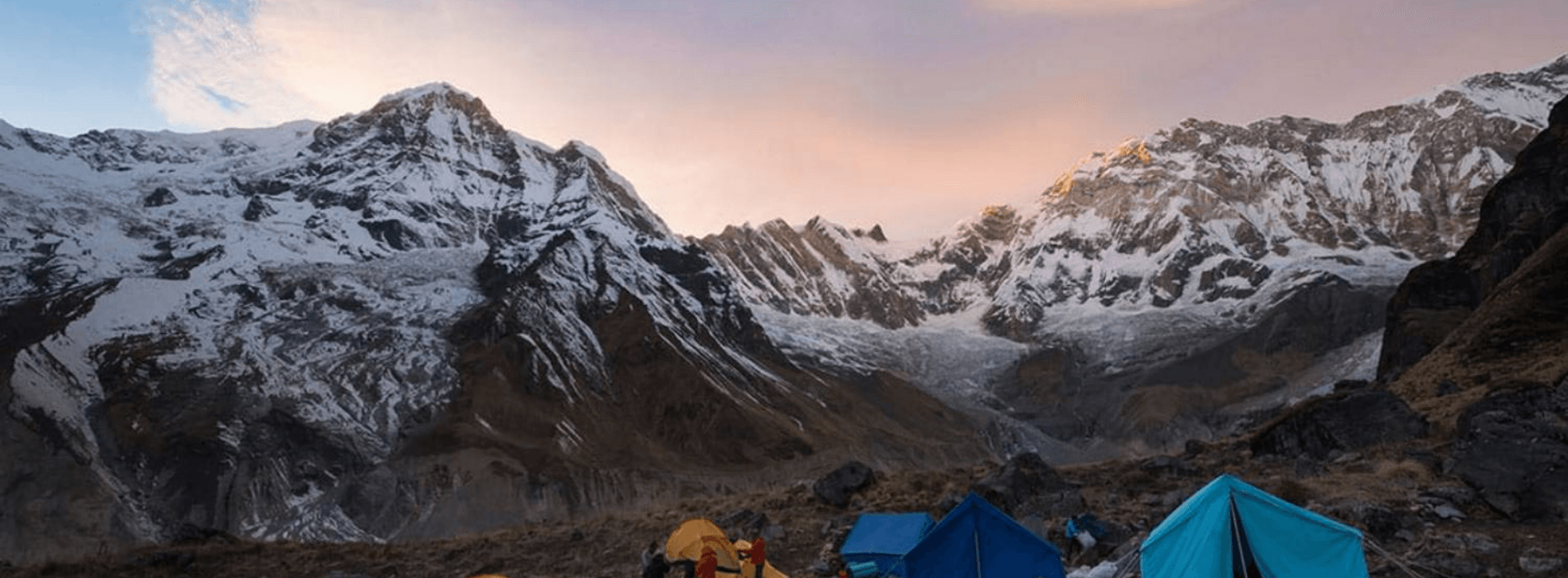Remarkably Powerful Lessons Learned In ABC From Altitude Sickness
Altitude sickness on the Annapurna Base Camp trek teaches vital lessons in humility, resilience, and self-awareness—revealing that slowing down, listening to your body, and respecting nature matter more than reaching the summit.

Remarkably Powerful Lessons Learned In ABC From Altitude Sickness
Altitude sickness on the Annapurna Base Camp trek offers trekkers some valuable and humbling lessons that go beyond just hiking. The stunning views of the Himalayas are breathtaking, but the thin air above 2,500 meters requires you to take it seriously. For many, facing this challenge becomes a big part of their experience.
One key lesson is that paying attention to your body is crucial. Altitude sickness can sneak up on you with symptoms like headaches, nausea, dizziness, and fatigue. If you ignore these early signs, things can get serious fast, leading to conditions like High Altitude Pulmonary Edema or Cerebral Edema, which can be life-threatening. Trekkers quickly realize that its okay to slow down, take extra rest days, or even turn back without feeling embarrassed.
Another important takeaway is the need for proper acclimatization and pacing. Climbing more than 300500 meters a day above 3,000 meters can increase your risk, so its essential to go slowly and give your body time to adjust. Staying hydrated, eating well, and getting enough rest arent just nice to havetheyre vital.
Perhaps the biggest lesson is that success on the trail isnt just about reaching the summit. Its about respecting the mountains and knowing when to take a break. The ABC trek teaches humility and gratitude for your health, for the power of nature, and for the friends who help you along the way.
In the end, altitude sickness serves as a teacher instead of a curse. It builds resilience, patience, and mindfulness. For many, those lessons stick with them long after theyve come down from the mountains and influence how they handle lifes challenges.
Altitude Doesnt Care About Your Fitness
Altitude sickness affects everyone, no matter how fit or experienced they are. Many hikers on the Annapurna Base Camp trail mistakenly think that being in shape protects them, but that's not the case. Even top athletes can get altitude sickness if they go up too fast or don't give their bodies time to adjust. Sure, being fit helps with the physical side of hiking, but it doesnt change how your body reacts when theres less oxygen. The mountain teaches you to be humble. It's important to remember that altitude rules apply to everyone. You can't just push through altitude sickness like you would with tired musclesit hits back harder. Being aware, pacing yourself, and taking care of yourself are what keep you safe. In the high Himalayas, knowing what to do is more valuable than just being strong.
Take It Slow
In everyday life, being fast is often seen as success. But on the ABC trek, taking your time is crucial. Moving too quickly raises your chances of altitude sickness and doesnt give your body a chance to adjust. The smarter plan is to keep a steady pace with breaks for acclimatization and hydration. Slowing down helps you pay attention to your bodys needs and enjoy the scenery. Youll see the prayer flags, hear the rivers, and feel more connected to the journey. Many trekkers find that the joy is not just in reaching Base Camp but in the way they got there. Going slow isnt a sign of weakness; its about being present, mindful, and safe. Patience in the mountains is powerful.
Listen to Your Body
Your body sends you signals all the time, and on a trek at high altitude, ignoring these signals can be risky. A slight headache or tiredness might seem trivial, but they can be early signs of altitude sickness. On the ABC trek, ignoring these signals can turn into a serious issue fast. Learning to listen means recognizing discomfort, taking breaks when needed, and being brave enough to turn back if necessary. This isnt weakness; it's about survival. The trail teaches that sometimes the bravest move is to stop and rest, not just keep going. Staying in tune with how you feel physically and mentally gives you the best shot at a safe and enjoyable adventure. You take this lesson with you long after the trek is done.
You Need to Acclimatize
If youre trekking in the Himalayas, acclimatization is key. Going up too high, too quickly, is a major cause of altitude sickness, which is why itineraries include acclimatization days above 2,500 meters. These days arent just for resting; theyre necessary. They help your body adjust to the lower oxygen levels, giving you a better chance of reaching Annapurna Base Camp safely. Use these days to explore nearby trails or just relax and let your body catch up. Its easy to get caught up in reaching the summit, but the mountain isnt going anywhere. Taking your time could be the difference between hitting your goal and having to head back early.
Stay Hydrated
One simple way to cope with altitude sickness is by staying hydrated, yet its often overlooked. At higher elevations, you breathe faster and lose more moisture, especially at night. Dehydration can make AMS symptoms like headaches and tiredness worse. On the ABC trek, drinking 34 liters of water a day is important. Dont wait until youre parchedits too late then. Adding electrolytes to your water can help keep your salt levels in check. Stay away from alcohol and too much caffeine, as they can make you lose more fluids. Your body relies on water to keep oxygen flowing and you feeling alert. Staying hydrated isnt just about performance; its about staying safe. In the Himalayas, your water bottle is as important as your hiking boots.
Dont Ignore Early Signs
Altitude sickness usually doesn't hit you all at once; it starts small. A mild headache or some shortness of breath might not seem like a big deal at first. But brushing these off can lead to serious health risks down the line. Many trekkers on the ABC trail have learned that minor issues can quickly lead to serious problems like HAPE or HACE. Its tempting to tough it out or think itll pass, but thats a risk you dont want to take. The better choice is to react early: rest, hydrate, and if needed, go back down. This approach can turn a potential emergency into nothing more than a minor setback. In the mountains, its smart to listen to your body, and responding to symptoms early shows wisdom, not weakness.
Turning Back Takes Courage
Deciding to turn back when youre not feeling well takes more bravery than just continuing. Many hikers worry about losing time, money, or pride by not reaching their goal. But knowing your limits on the ABC trek can save your life. The mountains dont care about your plansthey have their own rules. If you're feeling worse, the safest choice is to stop climbing or head back down. This isn't giving up; it's about respecting your body and the mountain. It takes strength to make that decision, especially when others keep pushing on. But the trail will always be there. Your health and safety come first. A wise retreat sets you up for a better return in the future.
Mental Strength Matters More Than You Think
While trekking to Annapurna Base Camp requires physical effort, your mental strength usually makes the biggest difference. Tiredness, altitude, cold, and uncertainty can all take a toll. Its your mindsethow calm, flexible, and positive you can bethat will get you through tough moments. Mental strength means adapting to changes, dealing with discomfort, and pushing past doubts while being safe. Its what helps you get up early for a sunrise hike or keep going when your legs feel heavy. Your mental toughness becomes as vital as your gear on the trail. The Himalayas challenge you in every way, but they also show you what youre capable of. By the time youre back, youll realize it was as much a mental and emotional journey as it was physical.
Prepare Well Ahead of Time
Trekking success begins long before you hit the trail. Good preparationlike training, picking the right gear, planning your itinerary, and learning about altitudesets you up for a safe and enjoyable ABC trek. Too many people show up unprepared, thinking they can rely on luck. But in the mountains, last-minute fixes dont work. You need layers for changing weather, meds for altitude sickness, and a flexible plan that includes acclimatization. Being prepared also means being mentally ready: knowing when to take a break, recognizing symptoms, and understanding the terrain. A well-prepared trekker knows how to deal with challenges instead of panicking. The more you prepare, the smoother things will go. Planning not only boosts your chances of success but also keeps you safe and calm.
Respect for Nature Grows Through Challenges
Facing the challenges of altitude, tiredness, and changing weather can change how you see nature. On the ABC trek, the raw beauty of the Himalayas teaches you humility. The mountains dont always stick to your plans; they make you adapt. When you push past your limits and come out okay, your appreciation for the surroundings deepens. You become more aware of the delicate balance of ecosystems, the resilience of local communities, and how human efforts relate to nature. The challenges make the beautiful views even more meaningful. Its not just about the sightsits about what youve gone through to see them. That struggle leaves a lasting impact, making you leave the mountains with more than just photos, but a deeper respect and awe for the world around you.
What advice do they give to people who have altitude sickness?
If you start feeling symptoms of altitude sickness during your trek, the best thing to do is stop climbing higher. Rest, drink plenty of fluids, and either stay at your current height or go back down if you're not feeling better. Many trekkers take Diamox (acetazolamide) for AMS, but only if a doctor recommends it. Its also good to avoid alcohol and smoking, eat high-carb foods, and take your time. In severe cases, descending is the safest choice. Ignoring the signs can be risky. Guides often say, Climb high, sleep low, and remind you to listen to your body.
What do you understand by altitude sickness?
Altitude sickness is when your body reacts poorly because you go to high places too quickly without giving it time to get used to the lack of oxygen. As you rise, the air pressure and oxygen levels drop, making it tough for your body to get enough oxygen. This can lead to headaches, nausea, and feeling out of breath. While mild cases are pretty common and manageable, more serious ones can impact your lungs or brain and might be life-threatening. Anyone can experience this, whether theyre trekkers, climbers, skiers, or even travelers who go to high-altitude places. Taking it slow, staying hydrated, and allowing your body to adjust are key to avoiding altitude sickness.
How does our body overcome altitude sickness?
As you climb higher, there's less oxygen available, which makes it harder for your body to function normally. To get through altitude sickness, your body needs time to acclimate. This process helps it adapt by increasing your breathing rate, making more red blood cells, and improving how well your blood circulates. Resting, drinking enough water, avoiding strenuous activities, and taking a gradual approach to climbing are all important. Sometimes, medications like Diamox can help your body get used to the altitude faster. Your body's ability to adapt depends on things like your genetics and overall health, along with how closely you stick to safety advice.
What is altitude sickness in the ABC trek?
Altitude sickness, or Acute Mountain Sickness (AMS), is a common issue on the Annapurna Base Camp Tours, especially when you reach heights above 2,500 meters. As you climb, the amount of oxygen in the air drops, and your body may not adjust quickly enough. Some typical signs include headaches, nausea, dizziness, tiredness, and trouble sleeping. On the ABC trek, these symptoms often show up between Deurali and Machapuchare Base Camp, where the elevation goes over 3,000 meters. If ignored, AMS can worsen and lead to serious issues like HAPE (fluid in the lungs) or HACE (swelling in the brain), which can be life-threatening and require quick action.


































